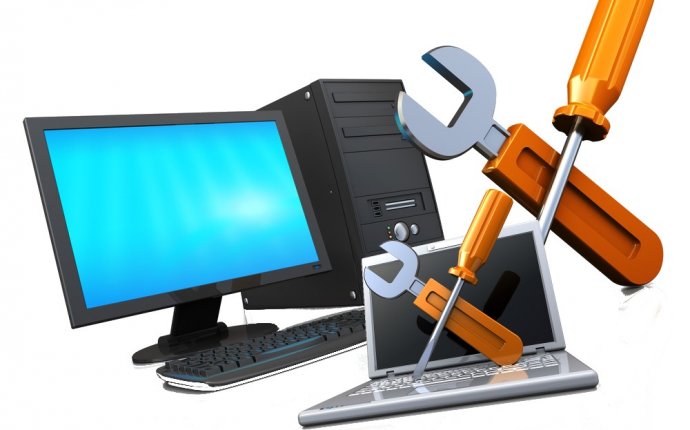
Computers service & repairing
Summary introduction to the standard hardware components of a personal computer, the tools and test equipment commonly used to execute basic troubleshooting and repairs and the safety practices used to protect both the technician and equipment from harm. This lesson also provides an overview of the disassembly and reassembly of a common desktop PC.
Students will learn the specific parts and features of motherboards found in personal computers. The lesson provides instruction on the support, maintenance, installation and replacement of this major computer subsystem.
Lesson Group 3— Hardware Essentials: Installation and Troubleshooting Practices
Topics for this lesson are focused on processors and memory. Students will learn specifications for popular Intel and AMD processors, as well as the specifications and configurations for DIMM and RIMM memory modules. Instruction includes details on selection criteria used to match processor and memory to the motherboard used in the system.
Coverage includes the primary devices used to cool the internal components of computer devices. This lesson also covers standard troubleshooting logic used to evaluate and correct malfunctions that occur in hardware installations when replacing or upgrading system components. Examples are provided for each primary hardware system and many individual components, as well as instructions specific to laptop computers and mobile devices.
Students learn about the various technologies employed inside common hard drives and the basic theory of how computer storage works. The lesson covers the configurations or hard drives, the hardware and cables used for installation, as well as the criteria used to select hard drives for multiple applications. Students will also learn about multiple devices used for external and portable data storage.
Lesson Group 4— Input/Output Devices, Networks, and Printers
Coverage of the basic skills required to install the hardware and software components of common I/O devices, as well as the use of Windows elements to manage all installed devices connected to a system. Specific instruction is provided for common I/O peripherals, adapter cards, video subsystems, and various storage devices.
Students learn the theory of TCP/IP protocols and associated standards that apply to building and managing networks. The steps required to connect computers to a network using different connection technologies are reviewed, as well as hardware for connection and cabling, and tools for installation and troubleshooting. Students will also learn about common Internet connection methods.
In this lesson, students will learn about common technologies used to construct different types of networks and the forms of Internet connection used for each. This lesson also covers the hardware used for wired network installations as well as the tools used for installation and troubleshooting.
Instruction on popular types of printers and the features that are unique to each style is provided, as well as practices for installation and management of printers in local or networked environments. The lesson includes tasks required for routine maintenance and troubleshooting techniques for printing problems.
Lesson Group 5 – Introduction to Operating Systems
This lesson provides fundamental instruction on the Windows operating system (OS) including the basic navigation of Windows, settings for personalization and the functionality of Windows explorer as a tool for structuring and navigating folder configuration and file storage. Students are also introduced to Windows support tools that can be used to obtain information about system configuration and user preference. Windows content is aligned to the current version of the CompTIA, A+ Certification exam.
Students will learn how to plan and execute a typical Windows OS installation from version selection to activation. Instruction is provided for both upgrade and clean installations and for both individual user and enterprise installations.
Lesson coverage is provided on the knowledge required to establish and execute a maintenance plan that provides optimum performance from a Windows OS installation. Students will learn about preventive maintenance, data and systems backup techniques and routines, and to employ Windows features to manage files folders, and drives.
Lesson Group 6 – OS Maintenance and Troubleshooting
This lesson expands on the student's Windows skill sets with instruction on the tools and utilities available in Windows to diagnose and correct system errors and related problems and to optimize the performance of systems that are not functioning at peak levels. Students will also learn the steps required to manually remove software when uninstall applications fail to provide complete removal.









